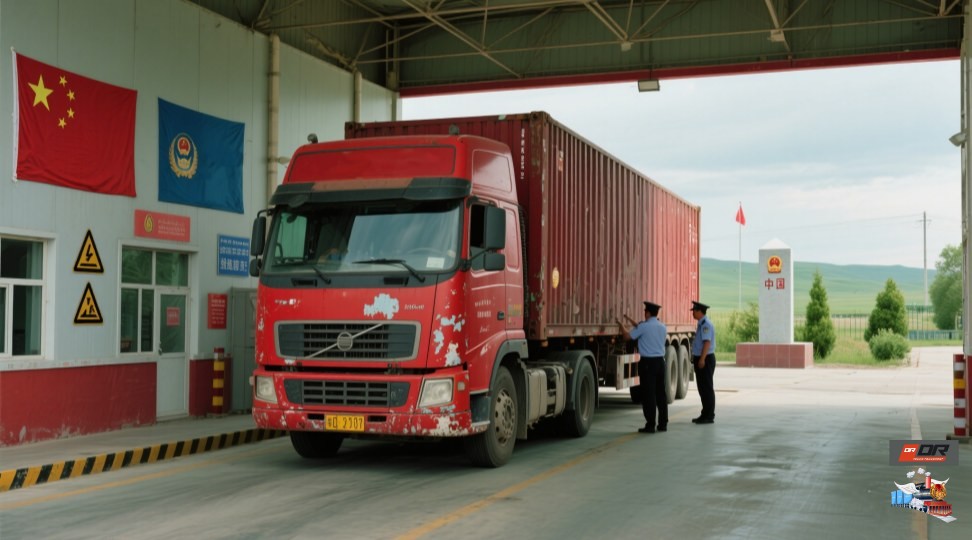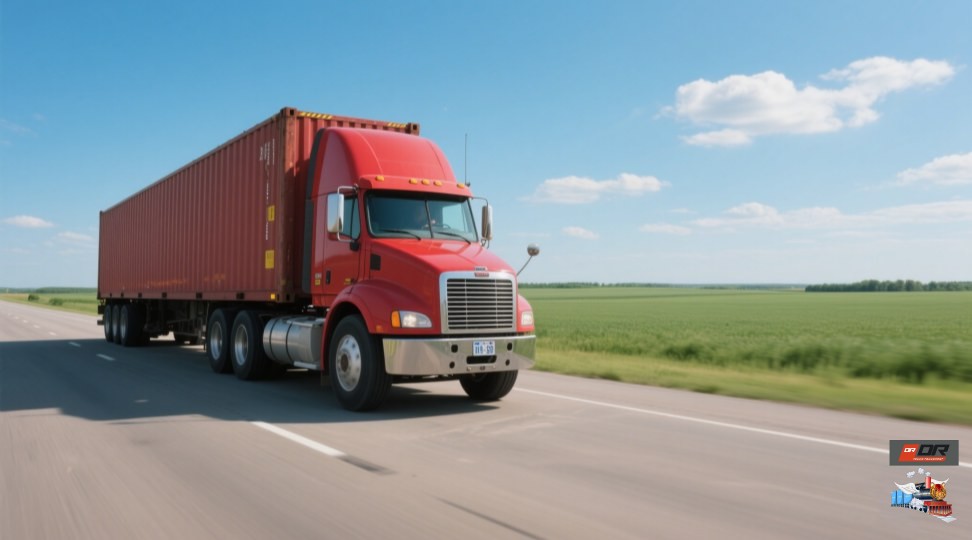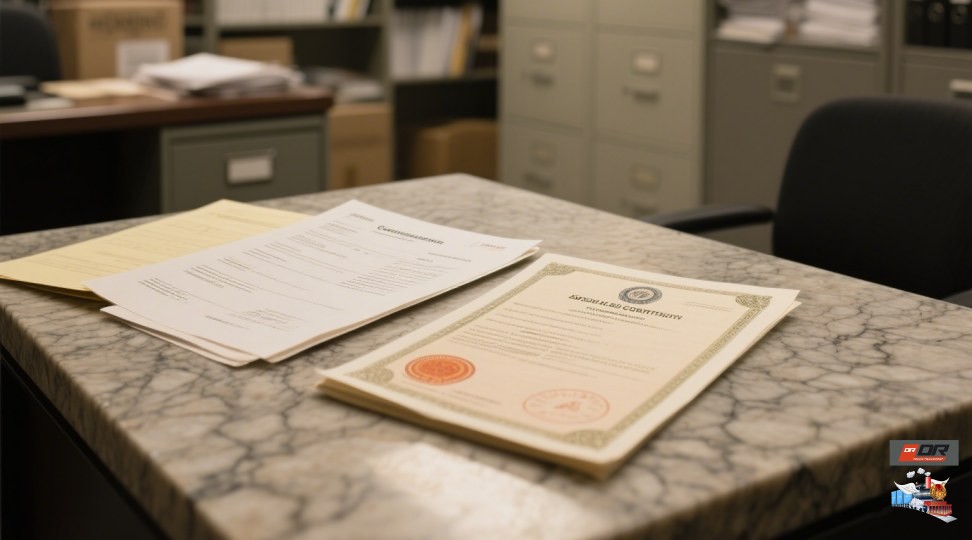يتطلب تصدير البضائع من الصين إلى روسيا وبيلاروسيا ودول آسيا الوسطى الخمس (كازاخستان، قيرغيزستان، طاجيكستان، تركمانستان، أوزبكستان) وألمانيا عدة خطوات تخليص جمركي. لكل وسيلة نقل - سواءً كانت شاحنة TIR، أو شحن بحري/جوي، أو قطار الصين-أوروبا السريع - إجراءاتها ورسومها الخاصة. تكلفة التخليص الجمركي في الصين تشمل إقرارات التصدير، ورسوم التوثيق، ورسوم الوسطاء في الصين، بالإضافة إلى الرسوم والضرائب في الوجهة. على سبيل المثال، عادةً ما تكون رسوم إقرار التصدير في الصين متواضعة (حوالي 100-150 يوانًا صينيًا للشحنة)، إلا أن رسوم الاستيراد (5-15% من القيمة) وضريبة القيمة المضافة (حوالي 20% في روسيا/بيلاروسيا) قد تؤثر بشكل كبير على تكلفة البضائع عند وصولها إلى المستودع. تُفصّل هذه المقالة إجراءات تصدير شاحنات TIR, متطلبات إعادة الشحن، وجمارك شحن السكك الحديدية في الصين، مع توفير مقارنات التكلفة وجداول التخليص الخاصة بالصناعة.

توفر شاحنات TIR (Transports Internationaux Routiers) خدمة فعالة إجراءات تصدير شاحنات TIR للطرق بين الصين ورابطة الدول المستقلة. بموجب اتفاقية النقل البري الدولي (TIR)، تحمل الشاحنة المختومة ضمانًا جمركيًا (دفتر النقل البري الدولي) يغطي الرسوم والضرائب؛ مما يُجنّب عمليات التفتيش المتعددة أثناء الرحلة. انضمت الصين إلى اتفاقية النقل البري الدولي (TIR) عام ٢٠١٨، مما يُبسّط الصادرات إلى روسيا وبيلاروسيا وآسيا الوسطى. عمليًا، يتقدم المُصدّر أو وكيل الشحن بطلب للحصول على دفتر النقل البري الدولي (TIR) من خلال رابطة النقل البري الصينية، ويُعدّ وثائق التصدير الصينية القياسية (الفاتورة التجارية، قائمة التعبئة، شهادة المنشأ، إلخ). يُسرّع دفتر النقل البري الدولي (TIR) من إجراءات التخليص الجمركي الصينية عند المغادرة: لا يلزم سوى فحص واحد عند الخروج، وبعد ذلك تعبر الشاحنة المختومة الحدود بأقل قدر من التدقيق.
تشمل عوامل التكلفة الرئيسية لشحنات شاحنات النقل البري الدولي (TIR) رسوم دفتر النقل والضمانات. يتطلب دفتر النقل البري الدولي (TIR) وديعة مالية (سند ضمان) للرسوم، غالبًا ما تكون في حدود 5000-20000 ين لكل رحلة، ولكن يتم استرداد هذا المبلغ بمجرد إرجاع الدفتر بعد التسليم. هذا يُبسط تكلفة التخليص الجمركي في الصين من خلال تجنب السندات الخاصة بكل دولة وتقليل التأخير (يمكن لنظام النقل البري الدولي (TIR) أن يوفر على المُصدّر ما يصل إلى 15-30% من إجمالي التكاليف). تشمل التكاليف النموذجية الأخرى لكل حمولة بطول 20 قدمًا (من الصين إلى الاتحاد الاقتصادي الأوراسي) رسوم السمسرة (حوالي 100-150 دولارًا أمريكيًا) ورسوم التوثيق (حوالي 50-100 دولار أمريكي). على سبيل المثال، يوضح الجدول 1 (أدناه) أن معدلات الرسوم العامة تتراوح بين 5-15% من قيمة الشحنة، بالإضافة إلى ضريبة القيمة المضافة بنسبة 20%.
التوثيق: الفاتورة، وقائمة التعبئة، ودفتر TIR، وشهادة المنشأ، بالإضافة إلى أي شهادات خاصة (مثل EAC) للسلع الخاضعة للتنظيم.
الإقرار الجمركي: التقديم الإلكتروني في الجمارك الصينية للتصدير؛ تعيين رموز النظام المنسق الصحيحة لتحديد الرسوم الجمركية.
إجراءات العبور: على كل حدود (الصين-كازاخستان، كازاخستان-روسيا، إلخ)، يتحقق المسؤولون ببساطة من سلامة ختم النقل البري الدولي (TIR). هذا يُجنّب عمليات التفتيش المطولة ورسوم التخزين.
تخليص الاستيراد: في روسيا/بيلاروسيا (الاتحاد الاقتصادي الأوراسي)، يتم إدخال البضائع المستوردة مرة واحدة (نظرًا لمشاركتهما في اتحاد جمركي). أما في آسيا الوسطى، فقد تتطلب الدول النهائية تخليصًا جمركيًا منفصلًا أو إدخالات عبور جمركية.
بشكل عام، تكلفة التخليص الجمركي بالنسبة لشحنات الشاحنات عبر TIR من الصين، تُغطي هذه الرسوم بشكل رئيسي رسوم الوسيط/الوكيل والرسوم الجمركية في الوجهة. بفضل TIR، تُقلل التكاليف الخفية، مثل الضمانات المتعددة والتخزين (مما يوفر ما بين 5000 و20000 ين ياباني لكل رحلة). باختصار، يوفر النقل البري عبر TIR "قناة خضراء": شاحنة واحدة مُرخصة ودفتر مرور يحل محل العديد من التصاريح الوطنية، مما يجعل الشحن البري إلى أوراسيا أسرع وأرخص.

في بعض الحالات، تصل البضائع من الصين إلى روسيا أو آسيا الوسطى أو أوروبا عبر إعادة الشحن - تغيير وسيلة النقل أو المرور عبر ميناء في بلد ثالث. على سبيل المثال، قد يشحن المصدرون حاويات بحرًا إلى ميناء في بحر البلطيق أو الشرق الأقصى، ثم يواصلون رحلتهم برًا. هذه متطلبات الجمارك لإعادة الشحن تتضمن مراحل تخليص جمركي متعددة. أولاً، يتم تقديم طلب التخليص الجمركي للصادرات الصينية (كما هو الحال مع أي شحنة). ثم، في ميناء إعادة الشحن أو المطار، تدخل البضائع إلى منطقة الترانزيت أو منطقة الإيداع الجمركي حتى المرحلة التالية. وأخيراً، يتم إدخال جمركي جديد في بلد المقصد (أو الاتحاد الأوروبي).
النقاط الرئيسية لإعادة الشحن:
التعامل مع المواد المرتبطة: يمكن أن تبقى البضائع في مستودع جمركي في ميناء وسيط (مثل فلاديفوستوك أو ريغا) دون دفع رسوم جمركية حتى موعد شحنها. يُبسّط هذا "التخليص الجمركي" الإجراءات الورقية ويُعفي من الضرائب. بالنسبة لآسيا الوسطى، تُقدّم كازاخستان مناطق إعادة شحن جمركية (مثل ألماتي وخورغوس) حيث يُمكن إعادة وضع العلامات على البضائع الصينية أو تجميعها قبل التصدير النهائي.
رسوم الجمارك: تُضيف إعادة الشحن رسومًا إضافية للمناولة. على سبيل المثال، يُمكن أن تُضيف مناولة الموانئ، ونقل الحاويات، والتخزين قصير الأجل 50-100 دولار أمريكي أو أكثر. يشير مسحٌ للشحنات العابرة للحدود إلى وجود "رسوم أخرى" (التفتيش، ورسوم الموانئ) على هذا الطلب.
إعلانات متعددة المراحل: تتطلب كل مرحلة إقرارات. على سبيل المثال، يشمل الشحن من الصين إلى ألمانيا عبر إسطنبول ما يلي: (1) إقرار تصدير صيني، (2) إقرار عبور تركي (في حال المرور عبر تركيا)، (3) تخليص جمركي للواردات من الاتحاد الأوروبي في ألمانيا. قد تُضاف رسوم سمسرة ورسوم حكومية إلى كل مرحلة.
التوثيق: يجب على المصدرين التأكد من صلاحية جميع المستندات (الفاتورة، قائمة التعبئة، شهادة المنشأ، أي تراخيص تصدير) لكل ولاية قضائية. قد تتطلب بعض البضائع (مثل الإلكترونيات والمنسوجات) شهادات خاصة عند الحدود النهائية، حتى لو كانت تعبر دولة أخرى فقط.
في ملخص، إعادة الشحن غالبًا ما يعني النقل (بحرًا أو جوًا بالإضافة إلى النقل البري) إجراءات جمركية مزدوجة. قد يُخفّض هذا تكلفة الشحن لمسافات طويلة، ولكنه يُضيف رسوم مناولة وتخزين وأوراقًا إضافية. ينبغي على التجار مراعاة رسوم إعادة الشحن الجمركية: فبالنسبة لحاوية سعة 20 قدمًا، تصل تكاليف التخليص الإجمالية (الوسيط + الوثائق + رسوم الميناء) بسهولة إلى بضع مئات من الدولارات. يُساعد العمل مع شركات الشحن: على سبيل المثال، تُدير شبكة نقل حاويات السكك الحديدية (Dear-Railway Container Transport) التوجيه والتخليص من البداية إلى النهاية عبر عدة دول.
ال خط سكة حديد الصين-أوروبا السريع تربط قطارات الشحن "طريق الحرير الحديدي" الصين بأوروبا (وأجزاء من روسيا/آسيا الوسطى) في غضون ١٢-١٨ يومًا تقريبًا. عادةً ما يكون التخليص الجمركي لشحنات السكك الحديدية سريعًا، وغالبًا ما يُدمج في رسوم العبور. على سبيل المثال، على الحدود الصينية الكازاخستانية (ألاشانكو-دوستيك)، تبلغ تكلفة الجمارك ورسوم تغيير المقياس الإلزامية حوالي 329 دولارًا أمريكيًا لكل قطاريتضمن ذلك التعامل مع عربات النقل الصينية إلى عربات الكازاخستانية (الروسية). يُعالج نظام "تيز جمارك" الجديد في كازاخستان الآن قطارات الشحن في وقت قصير يصل إلى 30 دقيقةمما يُقلل التأخير بشكل كبير. وبالمثل، على حدود الاتحاد الأوروبي (مثل بيلاروسيا وبولندا)، عادةً ما تُنجز القطارات إجراءات الجمارك في أقل من ساعة بعد تقديم الوثائق مُسبقًا.
خطوات التخليص بالسكك الحديدية: يُعِدّ المُصدِّرون الذين يُقدِّمون شحناتهم عبر السكك الحديدية إقرارات التصدير والفواتير الصينية الكاملة. ثم يُقدِّم مُشغِّل السكك الحديدية أو المُرسَل إليه إقرارات العبور في كازاخستان (أو منغوليا) وإقرارات الاستيراد النهائية في بلد المقصد. تُستحق الرسوم الجمركية وضريبة القيمة المضافة عند الوصول إلى بلد المستورد. بالنسبة لألمانيا (الاتحاد الأوروبي)، تتطلب البضائع المستوردة دخولاً جمركياً من الاتحاد الأوروبي (غالباً في بولندا أو ألمانيا)، بالإضافة إلى ضريبة القيمة المضافة من الاتحاد الأوروبي. بالنسبة لروسيا/بيلاروسيا (الاتحاد الاقتصادي الأوراسي)، يكفي دخول واحد من أي من حدود الاتحاد الاقتصادي الأوراسي.
تشمل التكاليف الشائعة للشحن بالسكك الحديدية: رسوم الوسيط/الوكيل (حوالي 100-150 دولارًا أمريكيًا كما هو الحال في وسائل النقل الأخرى) ورسوم الوجهة/ضريبة القيمة المضافة. يوضح الجدول 1 تفصيلًا تقريبيًا لتكلفة حاوية بطول 20 قدمًا عبر السكك الحديدية؛ ويُعد تغيير القياس (حوالي 329 دولارًا أمريكيًا) عاملًا مهمًا. مقارنةً بالشحن البحري، تتجنب السكك الحديدية التأخيرات الطويلة في المحيط (تم تشغيل أكثر من 17,000 قطار في عام 2023)، كما أن... تكلفة التخليص الجمركي تكلفة الحاوية الواحدة تنافسية، فرغم أنها أعلى من تكلفة النقل البحري، إلا أنها لا تزال أقل من تكلفة النقل الجوي. توفر الوثائق الموحدة للسكك الحديدية (إقرار التصدير الصيني + مستندات الاستيراد القياسية) وسرعة العبور عبر الحدود توفيرًا في الوقت والرسوم الخفية.
| صناعة | متطلبات التخليص للصادرات من الصين |
|---|---|
| الإلكترونيات | • شهادة المطابقة الأوراسية (EAC) إلزامية عند التصدير إلى روسيا/بيلاروسيا/كازاخستان. • شهادات CE/UL المطلوبة للاتحاد الأوروبي/ألمانيا. • المستندات القياسية (الفاتورة، قائمة التعبئة، المنشأ). الرسوم الجمركية عادةً ما تكون حوالي ٥-١٠٪ في الاتحاد الاقتصادي الأوراسي. |
| قطع غيار السيارات | • تتطلب العديد من المكونات شهادة EAC بموجب اللوائح الفنية (TR CU 018/2011) في الاتحاد الاقتصادي الأوراسي. • قد تحتاج الأجزاء الحساسة للسلامة إلى اختبارات/شهادات محددة. • رخصة تصدير صينية لبعض قطع غيار السيارات (إن وُجدت ضمن قائمة المراقبة). الرسوم الجمركية في الاتحاد الاقتصادي الأوراسي غالبًا ما تتراوح بين ٠٪ و٥٪ على القطع. |
| المنسوجات | • متطلبات وضع العلامات (محتوى الألياف، المنشأ) بموجب لوائح الاتحاد الجمركي. • لا حاجة لعلامة EAC (المنسوجات باستثناء الملابس الداخلية). • الفاتورة وشهادة المنشأ. • رسوم الاستيراد عادة ما تكون معتدلة (5-10%). |
| المواد الغذائية | • مطلوب شهادة/إعلان من EAC: يجب أن تتوافق جميع واردات الأغذية مع EAEU TR CU 021/022 (سلامة الأغذية/التسمية). • غالبًا ما تكون هناك حاجة إلى شهادات صحية أو نباتية (شهادات صحية). • ربما شهادة بيطرية (للحوم/الألبان). • تختلف الرسوم (غالبًا ما تكون بنسبة 10-20%)؛ وتطبق عمليات تفتيش صارمة وفحوصات مدة الصلاحية. |
| المواد الكيميائية | • شهادة أو إعلان EAC للمواد الكيميائية بموجب EAEU TR CU 041/2017 (السلامة الكيميائية). • يجب أن ترفق صحيفة بيانات سلامة المواد (MSDS) مع الشحنات. • التسجيل الحكومي لبعض المواد الكيميائية الخطرة. • رخصة تصدير المواد الكيميائية الخاضعة للرقابة إلى الصين. • تختلف الرسوم على نطاق واسع؛ وتخضع للمراقبة من قبل سلطات التصدير/الاستيراد. |
تُظهر كل صناعة أعلاه مستندات جمركية نموذجية. يجب على المصدرين ضمان استيفاء اللوائح الخاصة بالمنتج (على سبيل المثال، تحتاج الأجهزة الإلكترونية إلى اختبار EAC الروسي، وتحتاج الأغذية إلى تصريح صحي، وتحتاج المواد الكيميائية إلى موافقات السلامة). تُضيف هذه المتطلبات وقتًا ورسومًا إلى تكلفة التخليص الجمركي في الصين على سبيل المثال، قد يستغرق الحصول على شهادة EAC أسابيع وبضع مئات من الدولارات. يُعدّ التحضير الجيد (الشهادات، والأدلة المترجمة، ووثائق السلامة) أمرًا بالغ الأهمية لتجنب التأخير والغرامات على الحدود.

تشمل رسوم التخليص الجمركي من الصين إلى روسيا، وبيلاروسيا، وآسيا الوسطى، وألمانيا تكاليف المعاملات الورقية، والرسوم الجمركية، والضرائب، ورسوم الخدمات. بالنسبة لحاوية سعة 20 قدمًا، تتراوح تكاليف التخليص الإجمالية (الوسيط + عمليات التفتيش + ضريبة القيمة المضافة/الرسوم الجمركية) غالبًا بين بضع مئات إلى أكثر من ألف دولار أمريكي، حسب قيمة البضائع. أما الممرات البرية والسكك الحديدية (باستخدام تير (أو شحنات السكك الحديدية) تبسيط إجراءات التوثيق: يغطي دفتر TIR واحد أو إعلان سكك حديدية حدودًا متعددة. تُضيف عمليات إعادة الشحن البحري/الجوي رسومًا وخطوات مناولة إضافية. في جميع الأحوال، تعني قواعد الاتحاد الاقتصادي الأوراسي المنسقة أن المُصدّرين إلى روسيا/بيلاروسيا يواجهون مجموعة واحدة من المتطلبات (مثل شهادة EAC) بدلاً من القواعد الخاصة بكل دولة.
لضمان تخليص جمركي فعال من حيث التكلفة، ينبغي على المصدرين الاستعانة بشركات شحن ذات خبرة. تقدم شركات مثل "دير-ريلواي كونتينر ترانسبورت" خدمات متكاملة، حيث تنسق الحجوزات والجمارك في كل دولة. ومن خلال الحفاظ على دقة إعلانات التصدير (من الصين إلى روسيا/كاليفورنيا)، والامتثال المحدث (الشهادات والتراخيص)، والتواصل الواضح مع الوسطاء، يمكن للشاحنين التنبؤ بـ تكلفة التخليص الجمركي في الصين وتجنب المفاجآت. في نهاية المطاف، يُمكّن فهم الإجراءات الخاصة بكل وسيلة نقل - نظام النقل البري الدولي (TIR) للنقل البري، ونظام النقل البري المُلزم لإعادة الشحن، وبروتوكولات الشحن بالسكك الحديدية المُبسطة - الشركات من تحسين التكلفة اللوجستية الإجمالية مع ضمان سلاسة حركة الشحنات عبر الحدود.